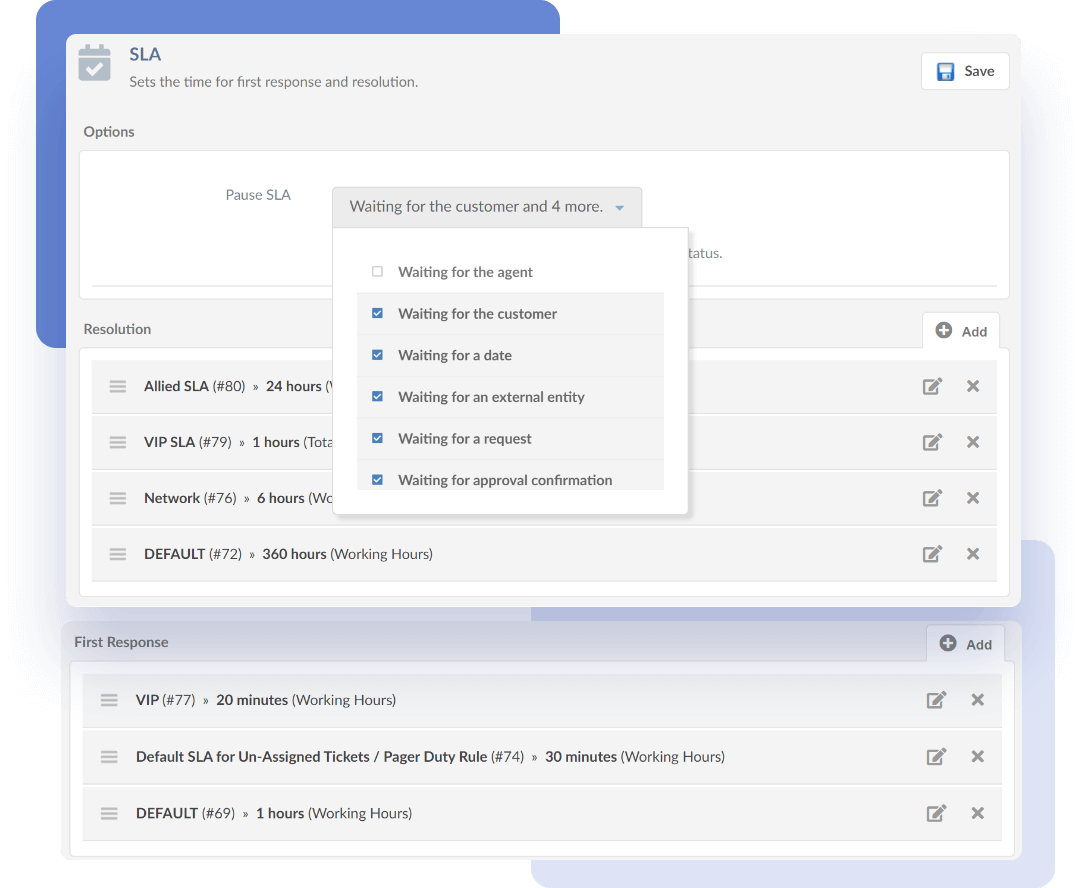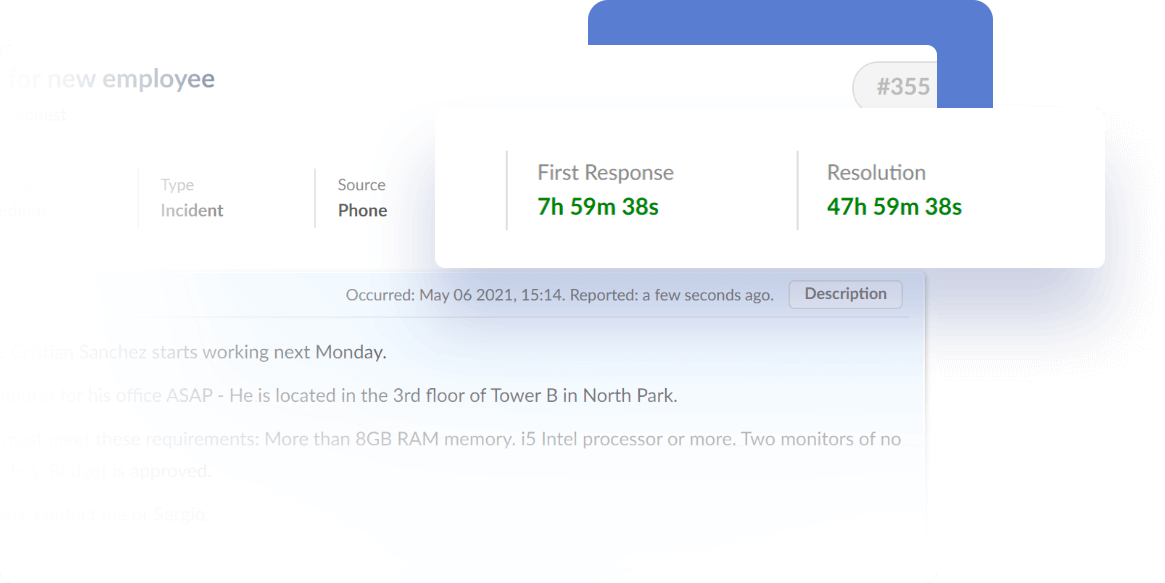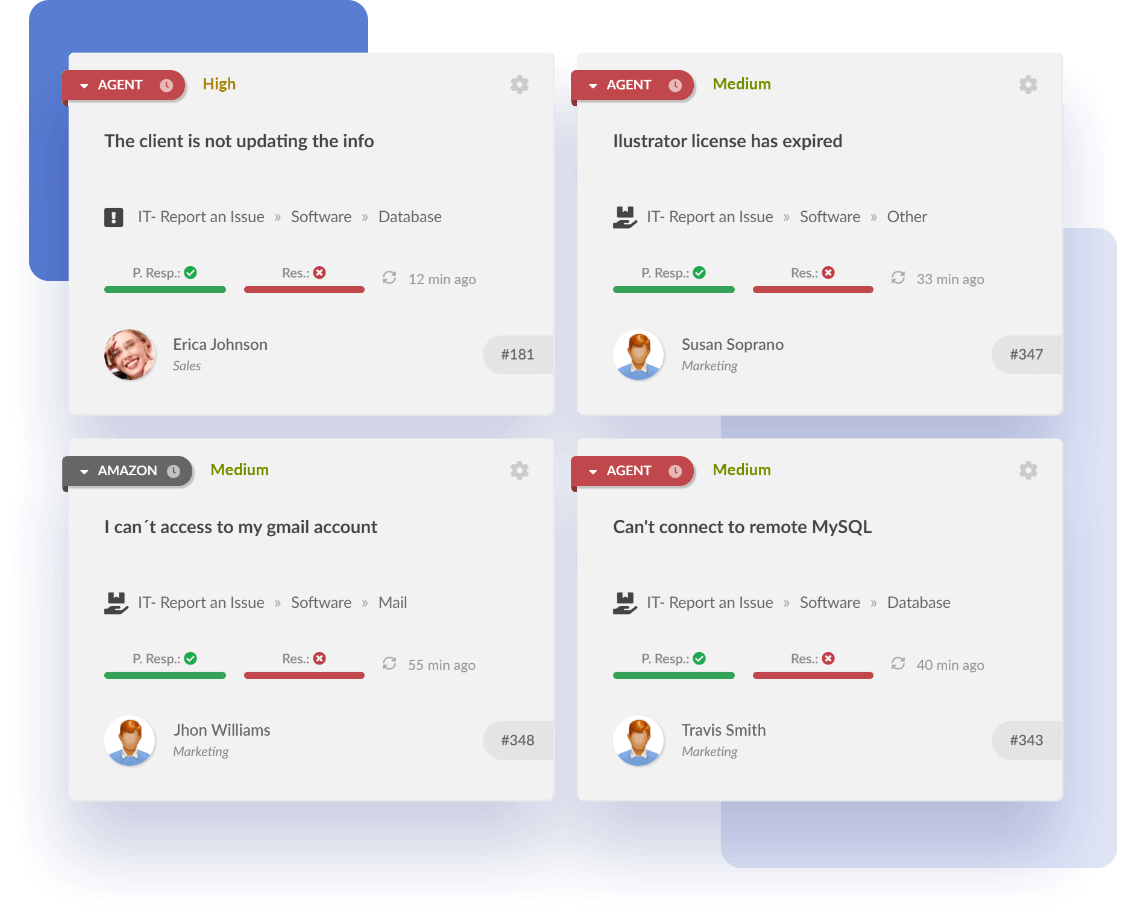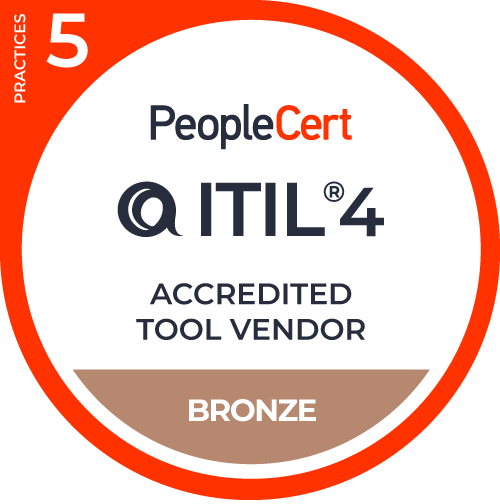Service Level Management and SLAs
Prioritize operations based on impact and urgency, plus agreed service level targets. Track tickets through to resolution, and get alerted when service level targets are close to breaching or have breached, ultimately helping your IT team to meet or exceed its agreed performance levels.
Align Your Team Priorities With Business Needs
Deal with issues and requests based on different resolution targets, thus different levels of urgency and attention. IT teams can define targeted time limits as broadly or as precisely as they need, with different targets for different phases of incident resolution or service request delivery.

Help agents to focus their time and effort where it’s needed most by providing a visual indicator of the agreed SLA response time, ensuring the most critical issues are dealt with first while still achieving SLA targets across all issues and service requests.

Prioritize based on impact and urgency, plus agreed service level targets, supporting your IT team in closely tracking tickets through to resolution. Different service levels can apply to both incidents and service requests, for different issue or request types, and for different locations, teams, or roles.

Benefits Service Level Management and SLAs
Available as an on-premise or SaaS solution, Service Level Management and SLAs will help your company to improve its IT support, IT help desk, or IT service operations through the focusing of attention on the things that matter most (at any point in time). Thanks to workflow, automation, and alerting, your IT team will be able to improve their operations and service delivery across a number of areas:
In service management expectations flow both ways - end users or customers have expectations of the service provider and the service provider has expectations of the customer. The failure to understand and meet these expectations, by either or both sides, results in lower service quality, customer satisfaction, and potentially increased costs.
The concept and need for customer experience has worked its way from consumer-world customer relationships into the workplace. This impacts not only the human-to-human aspects of IT support but also how technology is used.
InvGate Service Desk is built upon industry best practice that will allow your IT support team to both standardize and optimize their operations. This standardization will also play a key role in improving operations and services.
With InvGate Service Desk there’s less tail-chasing, information is easier to access, more tickets will be resolved within agreed targets, and end users will rate the IT support team more highly. All of which make for happier IT support staff and a greater probability that they will stay with the team.
Check out InvGate as your ITSM solution
30-day free trial - No credit card needed
